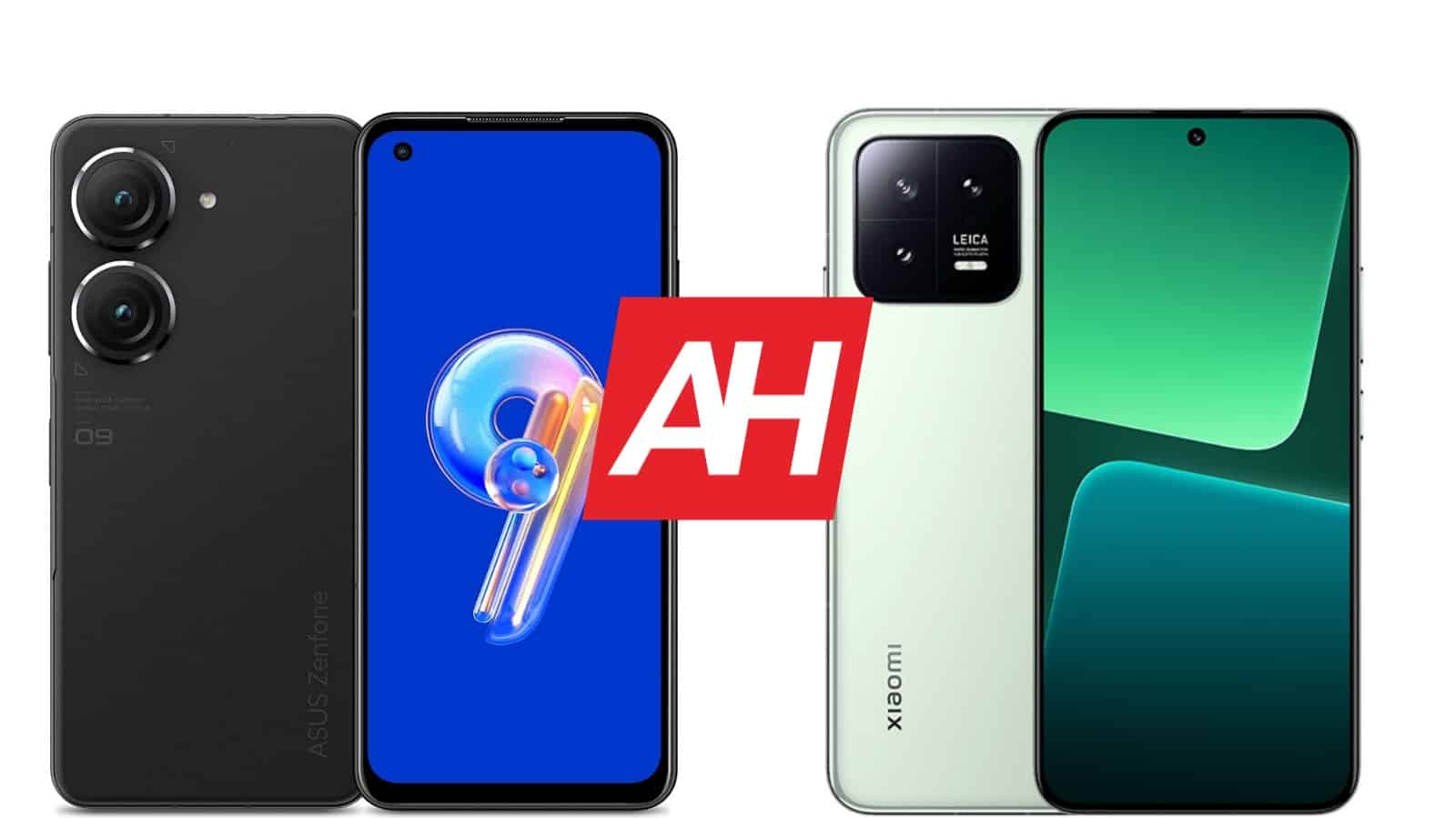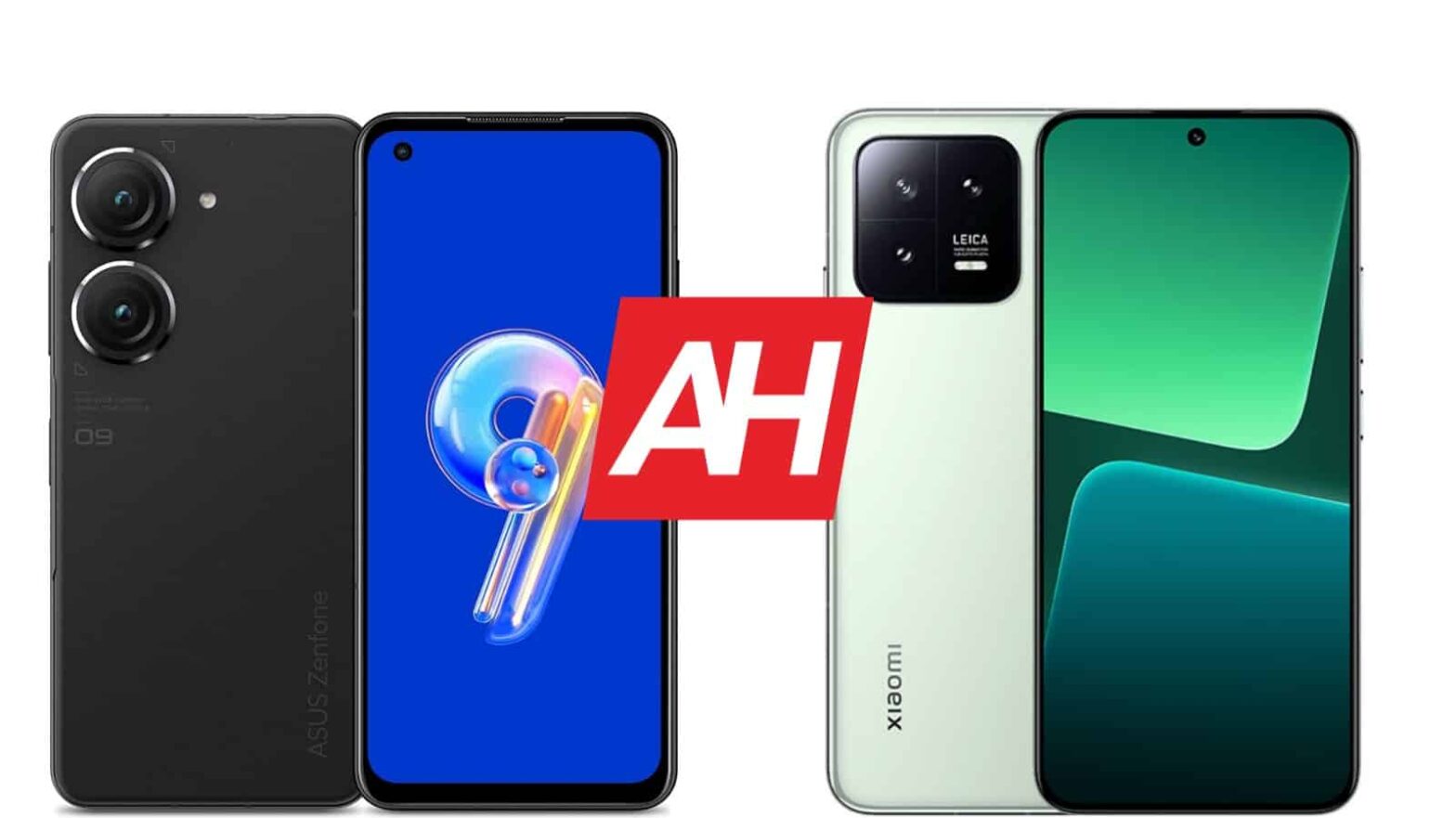The ASUS ZenFone 9 is one of the best compact smartphones you can get at the moment. It did get some competition when Xiaomi launched its very own, rather compact offering, the Xiaomi 13. Those are the two phones we’re here to compare, the ASUS ZenFone 9 vs Xiaomi 13. Granted, the ZenFone 9 is the smaller one of the two, and you will notice the difference. But still, the Xiaomi 13 has truly thin bezels, and a 0.46-inch larger display, so that may be worth it for some.
Both of these phones are quite powerful, though they both look different, and feel different in the hand. There are quite a few differences here in general, so comparing them should be interesting. We’ll first list their specifications, and will then move to compare them across a number of other categories. Let’s get to it!
Specs
ASUS ZenFone 9
Xiaomi 13
Screen size
5.9-inch FullHD+ Super AMOLED display (60-120Hz refresh rate, 1,100 nits peak brightness)
6.36-inch FullHD+ AMOLED display (120Hz refresh rate, 1,900 nits peak brightness)
Screen resolution
2400 x 1080
2400 x 1080
SoC
Qualcomm Snapdragon 8+ Gen 1
Qualcomm Snapdragon 8 Gen 2
RAM
8GB/16GB (LPDDR5)
8GB/12GB (LPDDR5X)
Storage
128GB/256GB (UFS 3.1), non-expandable
128GB (UFS 3.1)/256GB/512GB (UFS 4.0), non-expandable
Rear cameras
50MP (f/1.9 aperture, 23.8mm wide-angle lens, 1.0um pixel size, gimbal OIS, PDAF)
12MP (f/2.2 aperture, 113-degree FoV, 1.4um pixel size, 14.4mm lens)
50MP (f/1.8 aperture, 23mm lens, 1.0um pixel size, PDAF, OIS)
12MP (ultrawide, 120-degree FoV, f/2.2 aperture, 15mm lens, 1.12um pixel size)
10MP (telephoto, f/2.0 aperture, 75mm lens, 1.0um pixel size, PDAF, OIS, 3.2x optical zoom)
Front cameras
12MP (f/2.5 aperture, 1.22um pixel size, 27.5mm lens, dual pixel PDAF)
32MP (f/2.0 aperture, 22m lens, 0.7um pixel size)
Battery
4,300mAh, non-removable, 30W wired charging
Charger included
4,500mAh, non-removable, 67W wired charging, 50W wireless charging, 10W reverse wireless charging
Charger included
Dimensions
146.5 x 68.1 x 9.1mm
152.8 x 71.5 x 8mm
Weight
169 grams
185/189 grams
Connectivity
5G, LTE, NFC, Bluetooth 5.2, Wi-Fi, USB Type-C
5G, LTE, NFC, Bluetooth 5.3, Wi-Fi, USB Type-C
Security
Side-facing fingerprint scanner
In-display fingerprint scanner (optical)
OS
Android 12
ZneUI
Android 13
MIUI 14
Price
€799
€999
Buy
ASUS
Xiaomi
ASUS ZenFone 9 vs Xiaomi 13: Design
You will notice that both smartphones have flat displays, but don’t really look that similar from the front. The Xiaomi 13 does have thinner bezels in comparison (and uniform too), while their display camera holes are in different spots. The ZenFone 9 has one in the top-left corner, while the Xiaomi 13’s is centered at the top of the display. They both have rounded corners, though. You will notice that both of these phones also have flat sides all around.
Both devices also have physical buttons on one side only, the right side. The ZenFone 9’s power/lock key does double as a fingerprint scanner, and it has more functions. If we flip them over, you’ll notice quite a few differences. The ZenFone 9 has two cameras on the back, each of which is presented by its own camera island. The Xiaomi 13 includes three cameras back there, but all of them are included inside a single camera island.
The ZenFone 9 combines an aluminum frame with a composite polymer back, while the Xiaomi 13 comes in both glass back and silicone polymer back variants. It includes an aluminum frame. Both devices are IP68 certified, while the ZenFone 9 is the lighter of the two. It is also shorter, narrower, and thicker than the Xiaomi 13. Both smartphones feel really good in the hand, and are good for one-hand use, but the ZenFone 9 more so than the Xiaomi 13. Both companies did a good job when it comes to build quality.
ASUS ZenFone 9 vs Xiaomi 13: Display
The ASUS ZenFone 9 includes a 5.9-inch fullHD+ (2400 x 1080) Super AMOLED display. This panel is flat, and it has a 120Hz refresh rate. The ZenFone 9’s display supports HDR10+ content, and it also gets up to 1,100 nits of peak brightness. This display has a 20:9 aspect ratio, and it’s protected by the Gorilla Glass Victus.
The Xiaomi 13, on the flip side, has a 6.36-inch fullHD+ (2400 x 1080) AMOLED display. This display is also flat, and it has a 120Hz refresh rate. Dolby Vision is supported, and so is HDR10+ content, by the way. The Xiaomi 13’s panel goes up to 1,900 nits of peak brightness, and it has a 20:9 aspect ratio. The Gorilla Glass 5 protects this display.
Now, both of these displays are really good. They offer more than enough sharpness, they’re vivid, and have good viewing angles. The touch response is good on both of them. We did prefer the default color settings on the Xiaomi 13, but you can tweak that through the settings. The Xiaomi 13 panel does have one notable advantage, and that is its brightness. If you’re using your phone outdoors a lot, you’ll definitely appreciate the difference. The Xiaomi 13 can go way higher in terms of brightness.
ASUS ZenFone 9 vs Xiaomi 13: Performance
ASUS’ handset is fueled by the Snapdragon 8+ Gen 1 SoC. In addition to that, it includes up to 16GB of LPDDR5 RAM and UFS 3.1 flash storage. The Xiaomi 13, on the other hand, is fueled by the Snapdragon 8 Gen 2 SoC, while it comes with up to 12GB of LPDDR5 RAM and UFS 4.0 flash storage. Do note that its base, 128GB model, does include UFS 3.1 storage, not UFS 4.0. All the other variants do have UFS 4.0, though.
The Xiaomi 13 does include more powerful performance-related specs, that’s for sure. It has a more powerful SoC, and newer and faster RAM and storage. That is not something that will be obvious during usage, however. The Snapdragon 8+ Gen 1 is an outstanding SoC, and even though you may notice minuscule differences on how fast the two phones open apps, that’s really not important here.
The Snapdragon 8 Gen 2 will technically be able to handle more strain, but both phones perform admirably. Even when it comes to gaming, there’s nothing you won’t be able to run on the ZenFone 9. When you get the most graphically-intensive titles, you may notice a difference between the two, but the ZenFone 9 can still run any game with style. Both devices have outstanding performance, though we did prefer the software implementation on the ZenFone 9.
ASUS ZenFone 9 vs Xiaomi 13: Battery
ASUS’ handset includes a 4,300mAh battery, while the Xiaomi 13 has a 4,500mAh battery pack under the hood. They both offer good battery life, but the ZenFone 9 does have a slight advantage, at least based on what we’ve seen. Getting over 7 hours of screen-on-time was easily possible for us, while the Xiaomi 13 was closer to 6-6.5 hours most of the time. It’s possible that changed due to a number of updates, though, as the Xiaomi 13 is capable of providing more juice.
Your mileage may, of course, vary, considerably. You will be using your phone differently, with different apps installed, and with different signal strengths. One thing is for sure, for compact phones, both devices offer really good battery life. You cannot really expect the heights of the Galaxy S23 Ultra or the OnePlus 11, but for compact devices, this is excellent, especially if we compare them to some older models.
When charging is concerned, the Xiaomi 13 dwarfs the ZenFone 9. It supports 67W wired, 50W wireless, and 10W reverse wireless charging. The ZenFone 9 supports 30W wired, and 5W reverse wired charging. Both smartphones do come with chargers in the box, which is a nice touch, especially considering how many OEMs ditched chargers in the last couple of years.
ASUS ZenFone 9 vs Xiaomi 13: Cameras
The ASUS ZenFone 9 has a 50-megapixel main camera, and a 12-megapixel ultrawide camera (113-degree FoV). The Xiaomi 13, on the other hand, comes with a 50-megapixel main camera, a 12-megapixel ultrawide camera (120-degree FoV), and a 10-megapixel telephoto camera (3.2x optical zoom). The Xiaomi 13 also has Leica lenses on the back. Do note that the two phones provide entirely different-looking photos.
The ZenFone 9 loves to tune up the saturation, and the images do tend to look a bit oversharpened. That’s not immediately noticeable in some situations, but the moment you zoom in even a bit, you’ll notice it. The Xiaomi 13 images do tend to look closer to real life. If you opt for the ‘Leica Vibrant’ shooting mode, however, you can make them more lively, without having them looking overprocessed. It’s a nice balance, actually. Both phones provide sharp and nice-looking photos, but we prefer the Xiaomi 13 output, due to the lack of oversharpening.
Ultrawide cameras do keep up with the main cameras in terms of color profiles. The Xiaomi 13’s ultrawide camera has a wider field of view, however. The ZenFone 9 doesn’t have a telephoto camera, so zoom shots do look better on the Xiaomi 13. They actually look really good in general. Both selfie cameras are good for what you’ll use them for, but the ZenFone 9’s has the same problem as the rear cameras, too much sharpening.
Audio
You will find stereo speakers on both of these phones, and both sets are actually really good. I didn’t expect much out of the ZenFone 9 in this regard, mainly due to its size, but the phone sure delivered. Both sets of speakers provide detailed and pleasant sound output, while they can also get quite loud if needed.
The ZenFone 9 even has a headphone jack, in case you want to hook up your wired headphones. The Xiaomi 13 does not offer it, so you’ll have to utilize the Type-C port. If you prefer wireless headphones, the ZenFone 9 and Xiaomi 13 support Bluetooth 5.2 and Bluetooth 5.3, respectively.
The post Phone Comparisons: ASUS ZenFone 9 vs Xiaomi 13 appeared first on Android Headlines.

Source: ndroidheadlines.com
